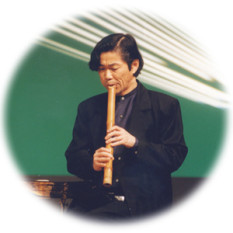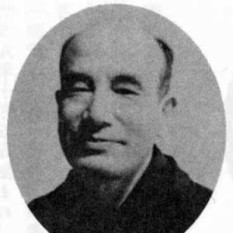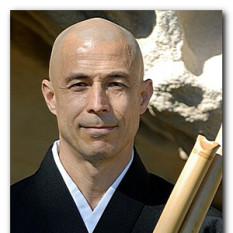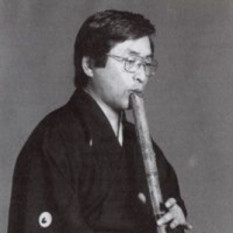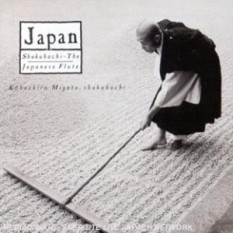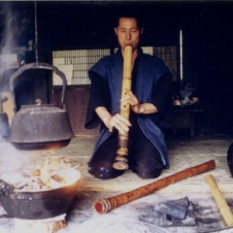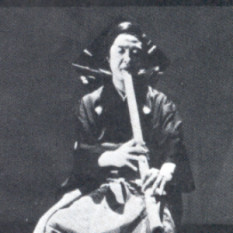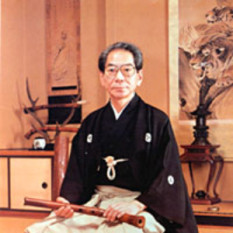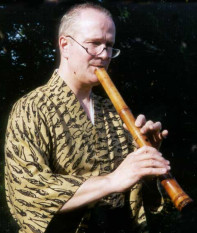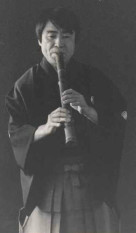The shakuhachi (尺八 (しゃくはち)?, pronounced [ɕakɯhatɕi]) is a Japanese end-blown flute. It is traditionally made of bamboo, but versions now exist in ABS and hardwoods. It was used by the monks of the Fuke school of Zen Buddhism in the practice of suizen (吹禅?, blowing meditation). Its soulful sound made it popular in 1980s pop music in the English-speaking world.
They are often made in the minor pentatonic scale.
he name shakuhachi means "1.8 shaku", referring to its size. It is a compound of two words:
shaku (尺?) means "shaku", an archaic unit of width equal to 30.3 centimeters (0.994 English foot) and subdivided in ten subunits.
hachi (八?) means "eight", here eight sun, or tenths of a shaku.
Thus, "shaku-hachi" means "one shaku eight sun" (almost 55 centimeters), the standard length of a shakuhachi. Other shakuhachi vary in length from about 1.3 shaku up to 3.3 shaku. Although the sizes differ, they are all still referred to generically as "shakuhachi".
A recorder player blows into a duct, a narrow wind-way over a block which is called a "fipple", and thus has limited pitch control. The shakuhachi player blows as one would blow across the top of an empty bottle (though the shakuhachi has a sharp edge to blow against) and has substantial pitch control. The five finger holes are tuned to a pentatonic scale with no half-tones, but the player can bend each pitch as much as a whole tone or more, using techniques called meri and kari, in which the blowing angle is adjusted to bend the pitch downward and upward, respectively. Pitches may also be lowered by shading or partially covering finger holes. Since most pitches can be achieved via several different fingering or blowing techniques on the shakuhachi, the timbre of each possibility is taken into account when composing or playing. The shakuhachi has a range of two full octaves (the lower is called otsu, the upper, kan) and a partial third octave (dai-kan). The different octaves are produced using subtle variations of breath and embouchure.
A 1.8 shakuhachi produces D4 (D above Middle C, 293.66Hz) as its fundamental - the lowest note it produces with all five finger holes covered, and a normal blowing angle. In contrast, a 2.4 shakuhachi has a fundamental of A3 (A below Middle C, 220Hz). As the length increases, the spacing of the finger holes also increases, stretching both fingers and technique. Longer flutes often have offset finger holes, and very long flutes are almost always custom made to suit individual players. Some honkyoku, in particular those of the Nezasaha (Kimpu-ryu) school are intended to be played on these longer flutes.
.

